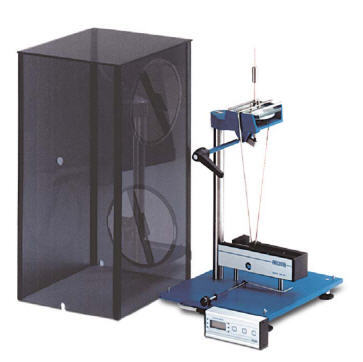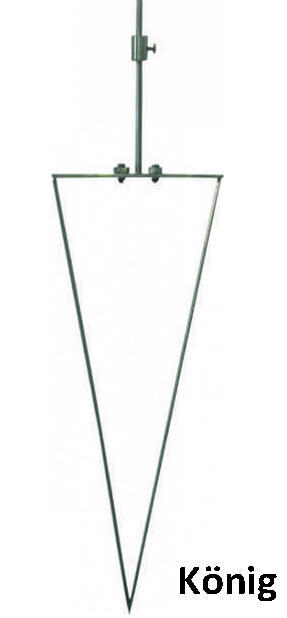Pendulum 299
Coatings & Industry > Physical properties > Hardness


Pendulum Damping Tester Model 299/300
Instruments based on the principle of pendular hardness: the damping time of a pendulum oscillating on a sample indicates its hardness.
The amplitude of the oscillations drops faster when the medium is soft.
The Persoz and König methods differ by the dimension, period and oscillations amplitude.
Purpose and Application
Pendulum damping tests with the Pendulum Damping Tester, Model 299/300, assess the mechanical damping properties of paints, varnishes and similar coatings.
Test Principle
The oscillations of a standardised pendulum placed on the test surface are damped in proportion to the "softness" of the coating.

- Stainless steel pendulum, weight 500 g, fitted with 2 balls measuring 8 mm Ø.
- Oscillation period: 1 s., deflections from 12° to 4°.
- Damping time on glass: minimum 430 ± 10 s.
- Stainless steel pendulum, weight 200 g, fitted with 2 balls measuring 5 mm Ø.
- Oscillation period: 1.4 s., deflections: 6° to 3°, number of oscillations: 179 ± 3.
- 2 counting methods: oscillations or time.
- Damping time on glass: 250 s. ± 4.2.

Technical Data
Basic Instrument:
Dimensions: Height: 700 mm Width: 325 mm Depth: 345 mm
Net weight: approx. 17 kg
Measuring Module (basic version):
Dimensions: Height: 60 mm Width: 235 mm Depth: 70 mm
Net weight: approx. 0.5 kg
Measuring Module (automatic version):
Dimensions: Height: 65 mm Width: 235 mm Depth: 107 mm
Net weight: approx. 0.75 kg
Control Terminal:
Dimensions: Height: 35 mm Width: 167 mm Depth: 65 mm
Net weight: approx. 0.4 kg
Supply voltage: 230 VAC ± 10 %
Power consumption: 25 VA
Order Information
DIN, ISO, ASTM, BS, SIS, SNV, NEN
“REFERENCE CLASS”
with protective acrylic glass hood, calibrating plate with Manufacturer's Test Certificate, without pendulum and measuring module
Necessary A c c e s s o r i e s (at option):
Ref 101-0432.01.32 Pendulum for measurements in accordance with König, incl. carrying case and Manufacturer's Test Certificate
Ref 101-0432.02.32 Pendulum for measurements in accordance with Persoz, incl. carrying case and Manufacturer's Test Certificate
Ref 101-0459.01.32 Measuring Module Basic Version, incl. Control terminal (manual pendel excursion) and Manufacturer's Test Certificate
Ref 101-0460.01.32 Measuring Module Automatic Version, incl. control terminal (automatic pendulum excursion) and Manufacturer's Test Certificate